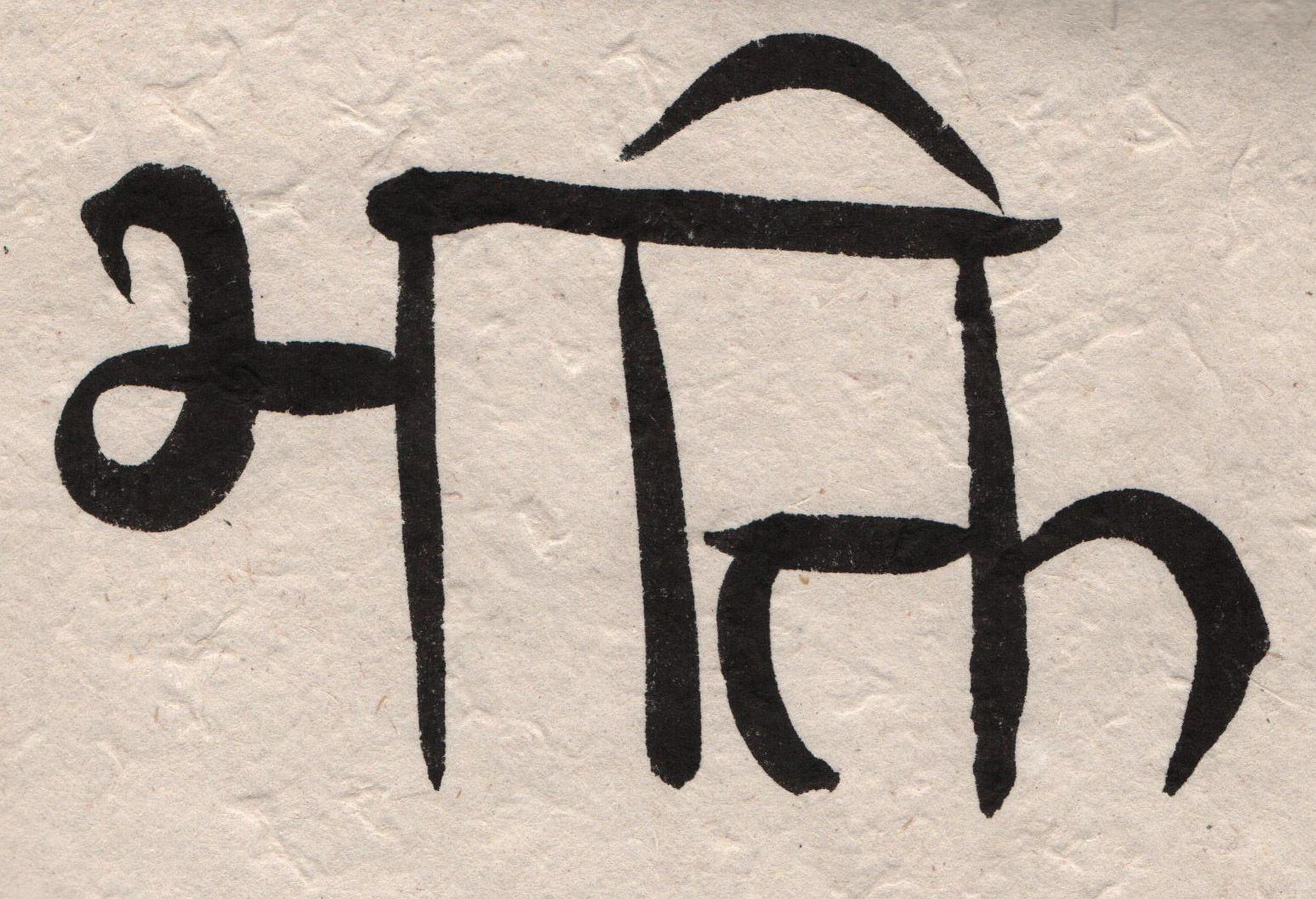I made this piece for my son, Gabriel, who is obsessed with the moon. Originally, I had planned on making it more detailed, but I really like the energy of this direct and simple execution. I am experimenting with this zen style of painting. The idea of the style is to empty your mind and let the energy of your spirit flow into the painting. When executing a Kanji calligraphy, the calligrapher would concentrate on the word or phrase and Chanel the energy of that into the calligraphy. When I do Sanskrit Calligraphy that’s what I do. It’s kind of a learning curve. I get a small brush and practice the word over and over until I’m comfortable with it. Even if it’s a word I know really well. Then I prepare several sheets of paper and execute the word full size several times. Sometimes I do several full size practices 1st, but if I have enough good paper, I just go for it, because sometimes the best one is what you thought was a practice one, and if you did it on practice paper, you’re screwed. At the end of the session, I’m exhausted and maybe have one or two good pieces. Maybe none came out good enough. It’s hard to tell because the aesthetic is different from traditional calligraphy. It has to have a vibe to it. It should also be relatively centered on the page and not have any glaring mistakes or drips.
A scene involving multiple subjects and composition and thought about meaning, mood, color, brushes, inks, requires too much mental activity to do it all in advance and then just execute a plan, like a well rehearsed dance. Spontaneity is a big part of of these pieces. It’s not Bach, it’s the blues. Pieces like the sumi moons on blue paper, are fairly spontaneous; I’ve painted similar scenes enough to not have to plan it out too much to get the right feel. Still the process of emptying my mind is the new element that has to fit into the puzzle. It’s difficult to do it for a prolonged period of time.
For this piece, I thought I would start with this simple moon/sky. First I did it in black; a series of enso circles to define the moon and the surrounding sky, then broader with water, to create a wash. Then back in with gold for the moon and a halo, and then blue violet for the sky, using the same technique. For each stroke, I empty my mind, breath out, breath in and then execute the stroke on the exhale, driving the energy through my body and down my arm and into the painting with each stroke. Then I had planned to go back and add detail to the moon, perhaps a ground beneath, maybe the ocean. Maybe add clouds, or stars. However, I was struck by the energy in the underpainting, and I thought further detail would weaken what seemed to me to be a strong piece. It’s for my son anyway, and not really for sale, so it doesn’t matter if it’s polished or not. He’s two years old. Almost three. But it was a real learning experience. To reset after each stroke, concentrate on what I am doing and not what I did or what I am going to do. This is the goal of this kind of technique. It’s a meditation practice for monks. Hopefully, I can keep this lesson learned.
A print of this piece can be purchased here.





















